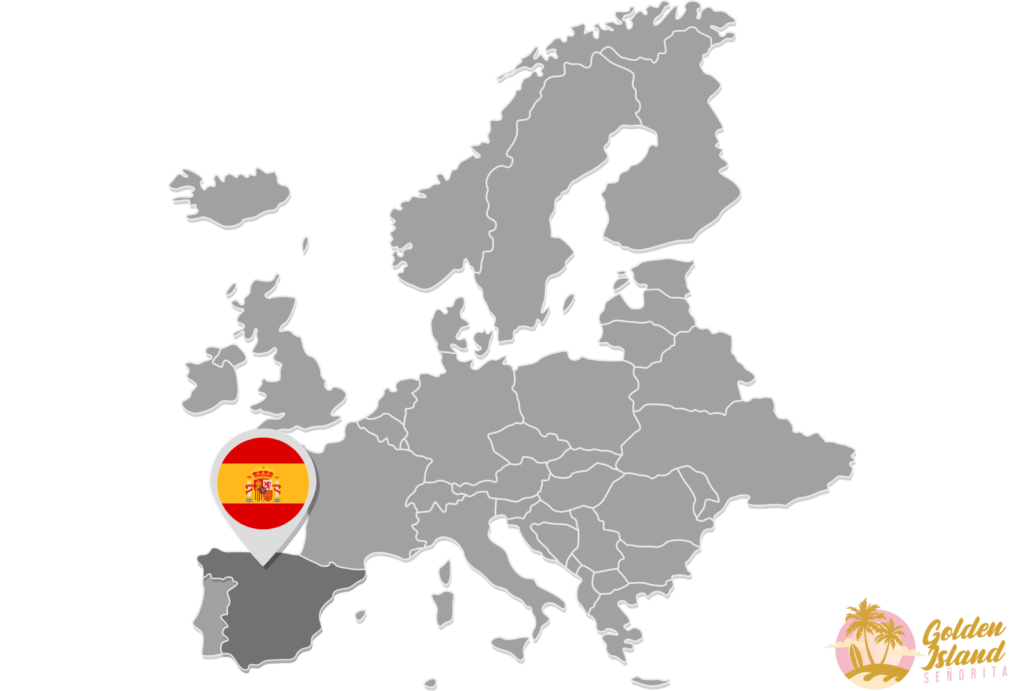Spain, officially known as the Kingdom of Spain, is a vibrant and culturally rich country located on the Iberian Peninsula in southwestern Europe. It shares its borders with Portugal to the west, France to the northeast, and Andorra to the north. The country is also surrounded by the Mediterranean Sea to the east and south, providing it with a diverse landscape that ranges from beautiful beaches to majestic mountain ranges.
With a history spanning thousands of years, Spain has been a cradle of civilizations, witnessing the influence of Phoenicians, Romans, Moors, and other cultures that have left a lasting impact on its art, architecture, and traditions. Today, Spain is renowned for its unique blend of modernity and tradition, offering visitors a glimpse of its rich heritage through magnificent historic sites, quaint villages, and vibrant festivals.
The country boasts a myriad of attractions, from the iconic Sagrada Familia in Barcelona to the historic Alhambra in Granada, the breathtaking beaches of the Costa del Sol to the picturesque countryside of Andalusia and the vibrant metropolis of Madrid, Spain has something to enthrall every traveler.
Apart from its cultural allure, Spain is celebrated for its mouthwatering cuisine, which includes delectable dishes like paella, tapas, and various regional specialties. The Spanish passion for life, known as “fiesta,” is evident in their lively celebrations, with vibrant carnivals, flamenco performances, and bullfighting being an integral part of the country’s cultural identity.
As one of the world’s top tourist destinations, Spain continues to welcome visitors from all corners of the globe, offering them an unforgettable experience filled with history, culture, gastronomy, and warm hospitality. Whether you’re seeking a relaxing beach vacation, an exploration of historical wonders, or an immersion into a vibrant and diverse culture, Spain promises to captivate your senses and leave you with cherished memories.

 VISA POLICY: If a foreign citizen is a resident of one of the 26 Schengen countries, they are not required to obtain a visa to visit Spain, since they are granted freedom of movement whether entering by air, land, or sea, for any purpose. Other visa-exempt travelers to the Schengen Area are now granted visa-free entry as long as their stay does not exceed 90 days in any 180-day period, for a few specific purposes such as tourism.
VISA POLICY: If a foreign citizen is a resident of one of the 26 Schengen countries, they are not required to obtain a visa to visit Spain, since they are granted freedom of movement whether entering by air, land, or sea, for any purpose. Other visa-exempt travelers to the Schengen Area are now granted visa-free entry as long as their stay does not exceed 90 days in any 180-day period, for a few specific purposes such as tourism.
Spain’s visa laws include 150 other countries that must obtain a visa in advance from a Spanish embassy or consulate in order to visit the country for tourism purposes. This involves submitting a variety of supporting documentation, including an eligible passport that is valid for at least 6 months prior to the planned date of entry into the country.
 TRAVEL INSURANCE: Having travel insurance is crucial for ensuring a worry-free and enjoyable experience. Spain is a beautiful destination with diverse attractions, from bustling cities like Barcelona and Madrid to serene coastal towns and historic landmarks. However, unforeseen circumstances such as medical emergencies, trip cancellations, or lost luggage can disrupt your plans and lead to unexpected expenses.
TRAVEL INSURANCE: Having travel insurance is crucial for ensuring a worry-free and enjoyable experience. Spain is a beautiful destination with diverse attractions, from bustling cities like Barcelona and Madrid to serene coastal towns and historic landmarks. However, unforeseen circumstances such as medical emergencies, trip cancellations, or lost luggage can disrupt your plans and lead to unexpected expenses.
With travel insurance, you’ll have peace of mind knowing that you’re financially protected and have access to assistance services in case of emergencies. Whether you’re exploring Gaudí’s masterpieces, indulging in delicious tapas, or soaking up the sun on the beaches of the Costa del Sol, having travel insurance ensures that you can focus on making unforgettable memories without the stress of potential mishaps.
Geography
 LOCATION: Spain, situated in the southwestern corner of Europe, boasts a prime geographic location that blends diverse landscapes and rich cultural influences. Bordered by the Mediterranean Sea to the east and south, and the Atlantic Ocean to the west and northwest, Spain enjoys a stunning coastline dotted with picturesque beaches and vibrant coastal cities.
LOCATION: Spain, situated in the southwestern corner of Europe, boasts a prime geographic location that blends diverse landscapes and rich cultural influences. Bordered by the Mediterranean Sea to the east and south, and the Atlantic Ocean to the west and northwest, Spain enjoys a stunning coastline dotted with picturesque beaches and vibrant coastal cities.
To the north, the rugged terrain of the Pyrenees Mountains forms a natural border with France, while to the northeast lies the expansive plains of the Iberian Peninsula. This strategic position has historically made Spain a crossroads of civilizations, resulting in a unique fusion of cultures, languages, and traditions that define its captivating identity.
Whether you’re drawn to the sun-drenched beaches of the Costa del Sol or the enchanting streets of Barcelona, Spain’s geographical diversity promises a memorable journey filled with endless discoveries.

 WEATHER: When planning your trip to Spain, timing is key to ensure the best experience possible. The best time to visit Spain largely depends on your preferences and the activities you have in mind. If you’re looking to enjoy sunny days and warm weather while exploring the beaches and coastal cities, the summer months from June to August are ideal. However, be prepared for larger crowds and higher prices during this peak tourist season.
WEATHER: When planning your trip to Spain, timing is key to ensure the best experience possible. The best time to visit Spain largely depends on your preferences and the activities you have in mind. If you’re looking to enjoy sunny days and warm weather while exploring the beaches and coastal cities, the summer months from June to August are ideal. However, be prepared for larger crowds and higher prices during this peak tourist season.
Spring (March to May) and autumn (September to November) offer pleasant temperatures, fewer tourists, and colorful festivals like Semana Santa (Holy Week) and La Tomatina. For outdoor activities such as hiking in the Pyrenees or exploring historic cities without the scorching heat, consider visiting during the shoulder seasons of spring and autumn. Winter (December to February) is perfect for skiing in the Sierra Nevada or enjoying cultural events like the Three Kings’ Day parade, although some regions may experience colder temperatures and shorter daylight hours. Ultimately, the best time to travel to Spain depends on your interests and what you hope to experience during your visit.
Demographics
 LANGUAGE: The majority of Spain speak Spanish, Castilian, or Castellano, the official country’s language. However, co-official languages exist, and varied degrees of bilingualism are widespread throughout the country. Furthermore, many people refer to a foreign language as their mother tongue or at least speak it.
LANGUAGE: The majority of Spain speak Spanish, Castilian, or Castellano, the official country’s language. However, co-official languages exist, and varied degrees of bilingualism are widespread throughout the country. Furthermore, many people refer to a foreign language as their mother tongue or at least speak it.
In addition to Castilian, six of Spain’s sixteen autonomous communities have co-official languages: Castilian, Catalan, Galician, Basque, Occitan and Arenese.
 RELIGION: Spain is known for its rich cultural and religious heritage, with Christianity being the most prominent religion in the country. The majority of Spaniards identify as Roman Catholics, and Catholicism has deeply influenced Spanish culture, traditions, and history for centuries. However, Spain is also home to other religious communities, including minority groups such as Muslims, Protestants, and Jews.
RELIGION: Spain is known for its rich cultural and religious heritage, with Christianity being the most prominent religion in the country. The majority of Spaniards identify as Roman Catholics, and Catholicism has deeply influenced Spanish culture, traditions, and history for centuries. However, Spain is also home to other religious communities, including minority groups such as Muslims, Protestants, and Jews.
Infrastructure
 CONNECTIVITY: Movistar, Vodafone, Orange, and Yoigo are the four major Spanish mobile networks. Movistar offers the strongest nationwide coverage, followed by Vodafone and Orange. The pricing and package differences between these major carriers are minimal (except for Movistar which typically is the most expensive option). Vodafone and Orange usually have good promotions, especially if you choose a phone plan contract with internet for your new home.
CONNECTIVITY: Movistar, Vodafone, Orange, and Yoigo are the four major Spanish mobile networks. Movistar offers the strongest nationwide coverage, followed by Vodafone and Orange. The pricing and package differences between these major carriers are minimal (except for Movistar which typically is the most expensive option). Vodafone and Orange usually have good promotions, especially if you choose a phone plan contract with internet for your new home.
 TRANSPORTATION: Public transportation is widely available in cities around Spain and is one of the most common modes of transportation for locals. Throughout Spain, there are several public transportation alternatives. Keep in mind that the options accessible to you may differ.
TRANSPORTATION: Public transportation is widely available in cities around Spain and is one of the most common modes of transportation for locals. Throughout Spain, there are several public transportation alternatives. Keep in mind that the options accessible to you may differ.
- Train: Traveling by train is a common mode of transportation. It is quite convenient, albeit service on the major line, the Spanish Speed Train (AVE), is somewhat restricted, traveling only from Catalonia to Andalusia and passes over Madrid. The AVE is more expensive than other train options, yet all are within most budgets. Furthermore, the trains are quiet, clean, and comfortable, allowing you to take them with ease.
- Bus: Another popular mode of transportation in Spain is the bus. They travel where the railway does not, with more regular service and more destinations. There are numerous different coach companies that operate buses around Spain at relatively low prices, all of which are very affordable for the budget.
- Cab: Cabs may be rented in most cities around Spain. Taxi cabs are convenient since they can take you anywhere you need to go. Taxi cabs are available 24 hours a day, seven days a week. Taxis may be costly, with taxi companies charging a per-meter rate for each location. There may be flat fees to and from the airport.
 SOCKETS AND ADAPTERS: Power plugs and sockets in Spain are of type F, popularly known as “Schuko.” This socket is also compatible with plugs C and E.
SOCKETS AND ADAPTERS: Power plugs and sockets in Spain are of type F, popularly known as “Schuko.” This socket is also compatible with plugs C and E.
The standard voltage in Spain is 230 V, and the frequency is 50 Hz. You can use your electric appliances in Spain if your country’s standard voltage is between 220 and 240 V (as is in the UK, Europe, Australia and most of Asia and Africa). If the standard voltage in your country is between 100 and 127 volts (as it is in the United States, Canada, and most South American countries), you will need a voltage converter in Spain. You might also try a power plug adapter/voltage converter combo.
Culture and Society
 CUISINE: Spain is a food lover’s paradise, offering a mouthwatering array of dishes that capture the essence of its vibrant culture.
CUISINE: Spain is a food lover’s paradise, offering a mouthwatering array of dishes that capture the essence of its vibrant culture.
- Paella: A delicious rice dish flavored with saffron and loaded with seafood, chicken, or vegetables.
- Tapas: Small plates of savory bites perfect for sharing, including patatas bravas, croquetas, and Spanish omelet.
- Jamón Ibérico: Exquisite cured ham made from acorn-fed Iberian pigs, offering a unique and rich flavor.
 TOURISM: The country is brimming with captivating destinations that promise unforgettable experiences for travelers. From the vibrant streets of Barcelona to the historic charm of Seville, there’s something for everyone to explore.
TOURISM: The country is brimming with captivating destinations that promise unforgettable experiences for travelers. From the vibrant streets of Barcelona to the historic charm of Seville, there’s something for everyone to explore.
- Barcelona: Explore the iconic architecture of Antoni Gaudí, including the Sagrada Familia and Park Güell.
- Seville: Immerse yourself in the historic charm of the Alcazar Palace and wander through the winding streets of the Santa Cruz neighborhood.
- Madrid: Discover world-class museums like the Prado and Thyssen-Bornemisza, and experience the vibrant atmosphere of the Puerta del Sol.
Finance
 CURRENCY: The Euro is the official currency in Spain, which means you’ll need to make sure you convert it accurately and have enough cash to get around the city, pay for meals and services, and shop. Its abbreviation is EUR, and its symbol is €. It’s denominations are: 1, 2, 5, 10, 20 and 50 cent; and 1 and 2 euro coins. While Euro banknotes are: €5, €10, €20, €50, €100, €200 and €500.
CURRENCY: The Euro is the official currency in Spain, which means you’ll need to make sure you convert it accurately and have enough cash to get around the city, pay for meals and services, and shop. Its abbreviation is EUR, and its symbol is €. It’s denominations are: 1, 2, 5, 10, 20 and 50 cent; and 1 and 2 euro coins. While Euro banknotes are: €5, €10, €20, €50, €100, €200 and €500.
 BANKS AND ATMS: You can find ATMs that accept your debit and credit cards by using online ATM locators for Maestro, Mastercard, Visa, American Express, and Discover (Your credit cards in Spain will work as long as you have a 4-digit PIN code). ATMs are typically run by one of three service providers: multinational banks, regional banks, or non-bank ATM operators.
BANKS AND ATMS: You can find ATMs that accept your debit and credit cards by using online ATM locators for Maestro, Mastercard, Visa, American Express, and Discover (Your credit cards in Spain will work as long as you have a 4-digit PIN code). ATMs are typically run by one of three service providers: multinational banks, regional banks, or non-bank ATM operators.
ATM fees apply in most of it that includes: Basic cash withdrawal fee, Out-of-network withdrawal fee, Currency Conversion Fee, or ‘Exchange Rate Margin’, and Dynamic currency conversion fee. So be sure to have Euros on hand or have them exchanged prior instead of using ATMs in Spain. They not only charge a higher exchange rate than the market rate, but they are often worse than a traditional bank’s exchange rate.







